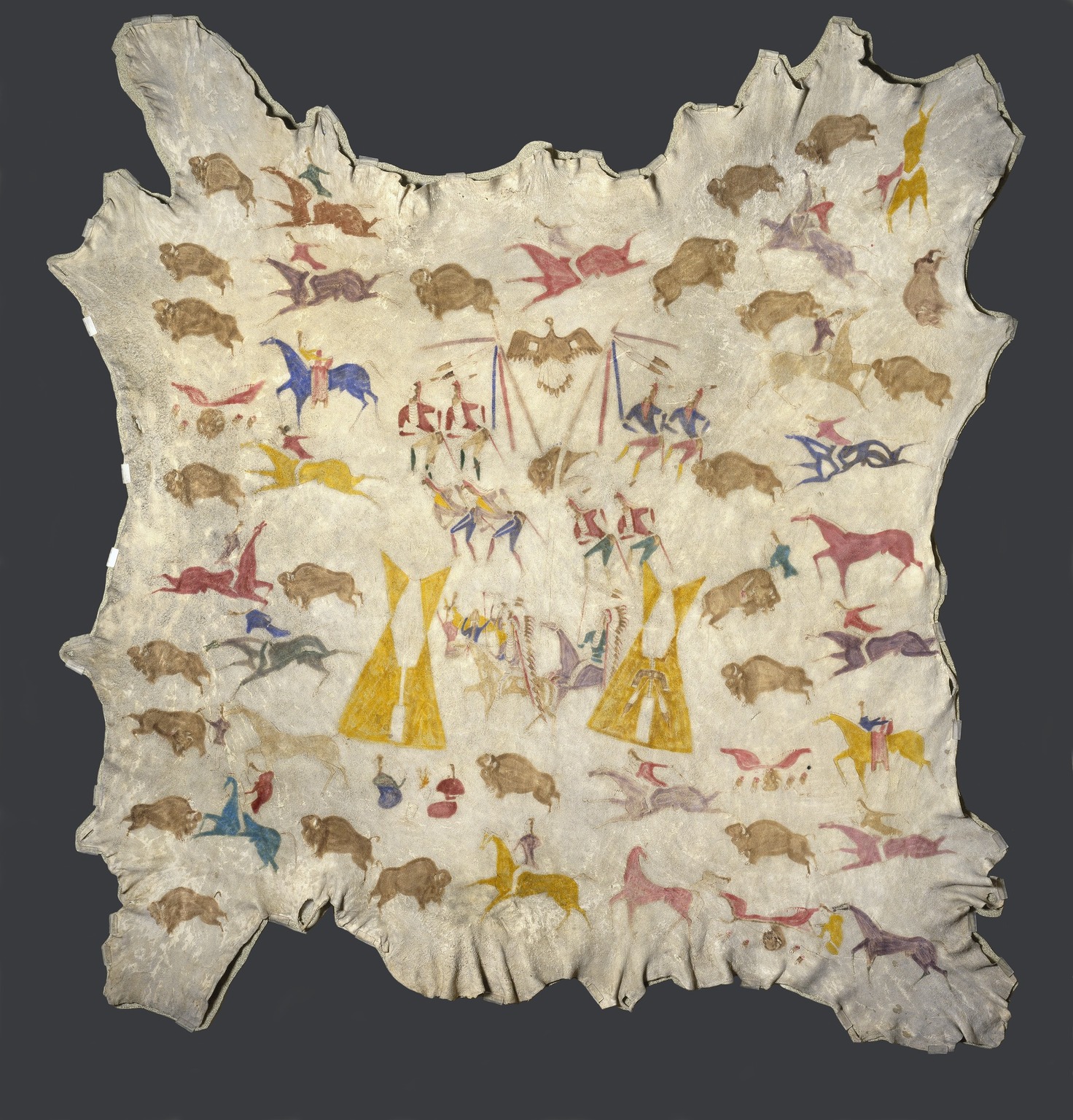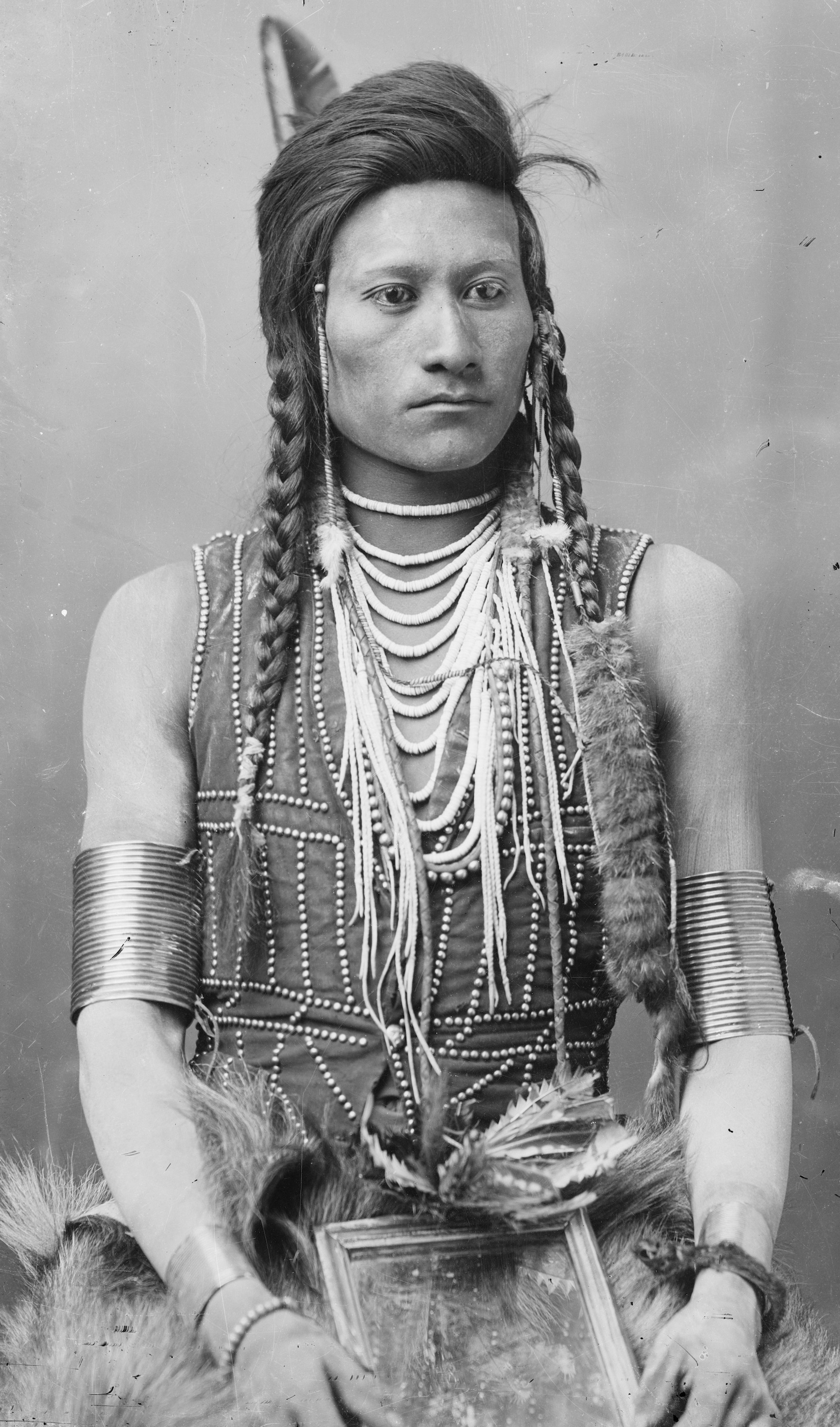This is a painted elk hide. Its narrative includes a camp scene with tipis, a "sun" dance, modified to show an eagle rising above the pole structure, which has an unraised buffalo head. Warriors dressed in finery are entering the village. On the fringe a group of women sit near a fire. The perimeter depicts a buffalo hunt with the hunters on horseback using rifles. Vignettes of skinning the buffaloes are also depicted with heaps of the heads, hides, and hooves separated and piled.
By 1900, when this hide was painted, the Eastern Shoshone band was confined to the Wind River Reservation in Wyoming, and the artist (possibly Cotsiogo) turned to the tourist economy as a means of support. This nostalgic work harkens back to pre-reservation times with scenes of the Wolf and Sun Dances, a buffalo hunt, women butchering buffalo, and warriors on horseback returning to camp.
Prior to the 1860s, when Native people were forced onto reservations by the U.S. government so white settlers could occupy tribal lands, the vast Shoshone territory encompassed what is now southeastern California, central and eastern Nevada, northwestern Utah, southern Idaho, and western Wyoming.
P.S. Meet Joan Hill, a female Native American artist who celebrated her heritage through her art.


 Cotsiogo (Cadzi Cody) .
Cotsiogo (Cadzi Cody) .